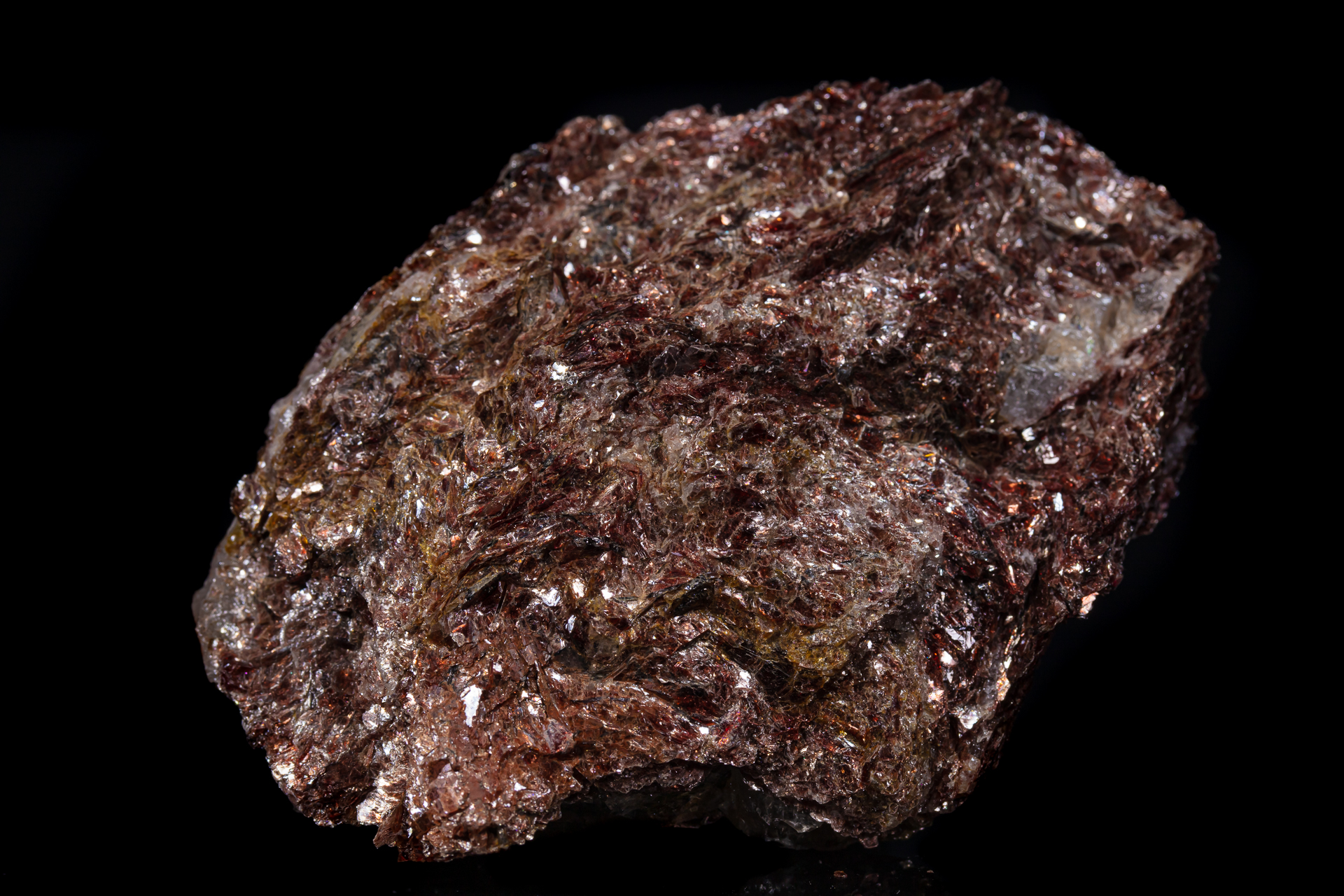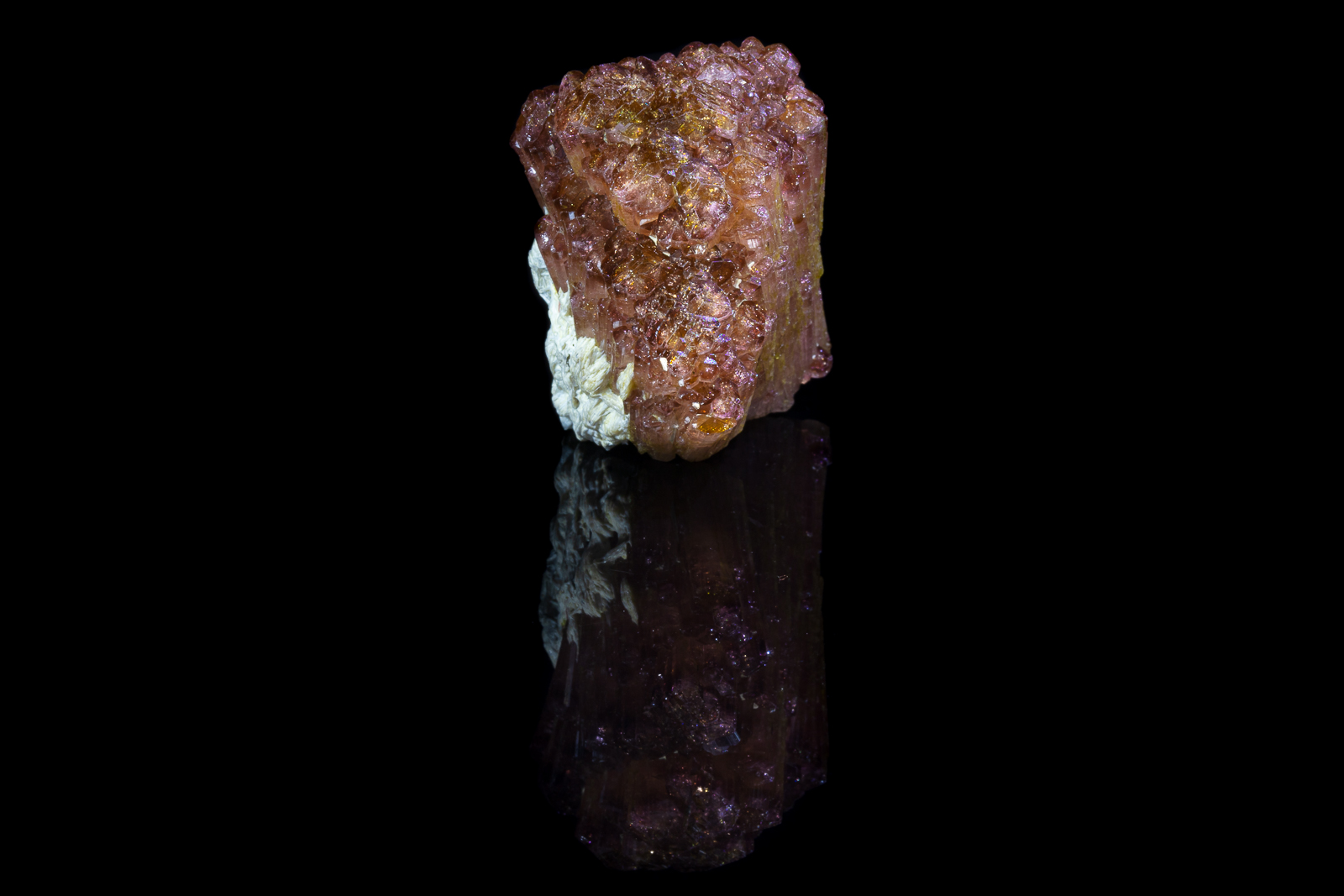Muscovite
Formula: KAl2(AlSi3O10)(OH)2
Species: Silicates – (Philosilicates)
Colour: White to colorless, silvery-white, and tinged various colors by impurities.
Lustre: Vitreous, Silky, Pearly
Hardness: 2½
Specific Gravity: 2.77 – 2.88
Crystal System: Monoclinic
Member of: Dioctahedral mica Group > Mica Group
Name: The earliest names attributable to muscovite include Muscovy Glass, Cat Silver, and Lapis Specularis (stone mirror); these names appearing in texts in the seventeenth century and before. The stand-alone name ‘Muscovite’ was used as early as 1794 by Johann Gottfried Schmeisser in his System of Mineralogy and is derived from the term “Muscovy glass,” which was in common use by that time. Muscovy Province in Russia yielded sheet mica for a variety of uses. Muscovite and sometimes similar species were earlier called mica , glimmer, and isinglass but all of these terms are still in use to some degree. It should be noted that mica, glimmer, and isinglass were also used for a variety of materials before these given dates and in those earlier times did not always indicate what would be a mineral, much less muscovite proper. Isinglass, for example, was originally used for a gelatinous bladder found in sturgeon.
The most common of the Mica Group minerals, it is typically found as massively crystalline material in “books” or in flaky grains as a constituent of many rock types. It is clear with a pearly luster on cleavage faces, often having a sparkly look in rocks.

 Copyright Charles Camarda - www.camardavisualstudio.com
Copyright Charles Camarda - www.camardavisualstudio.com Copyright Charles Camarda - www.camardavisualstudio.com
Copyright Charles Camarda - www.camardavisualstudio.com


 Copyright Charles Camarda - www.camardavisualstudio.com
Copyright Charles Camarda - www.camardavisualstudio.com